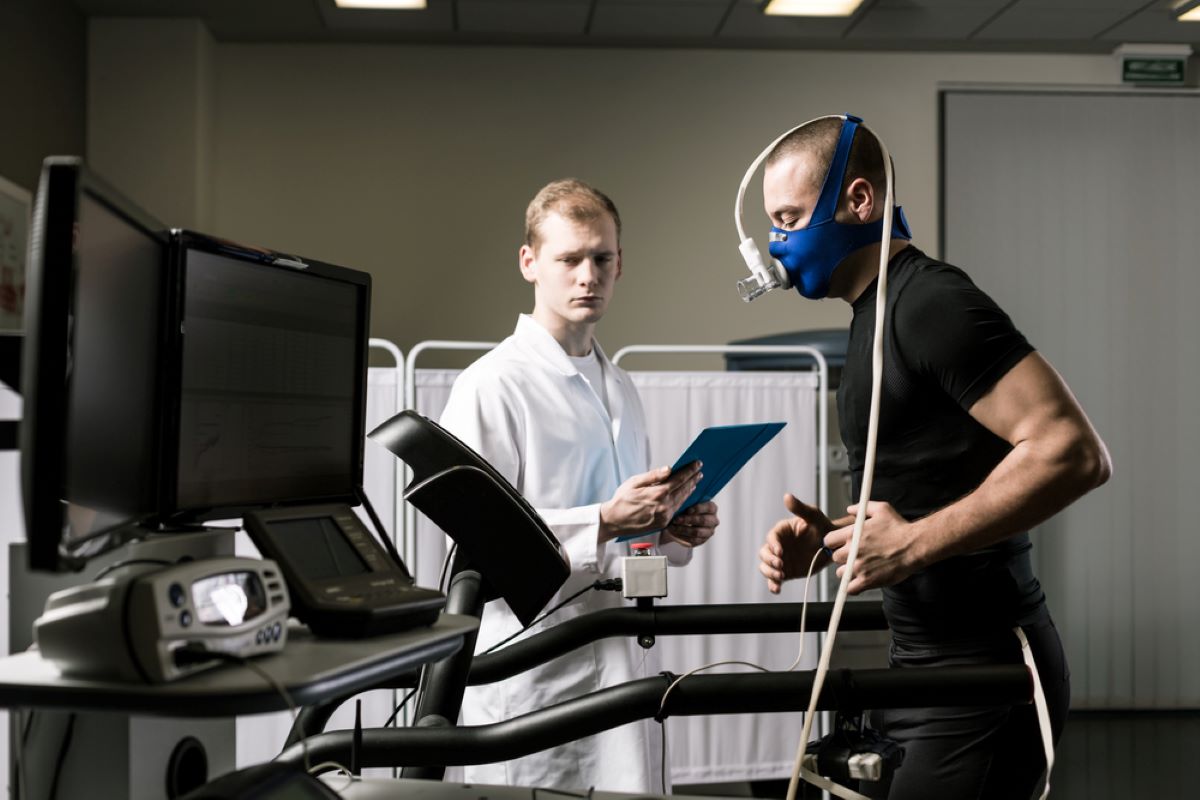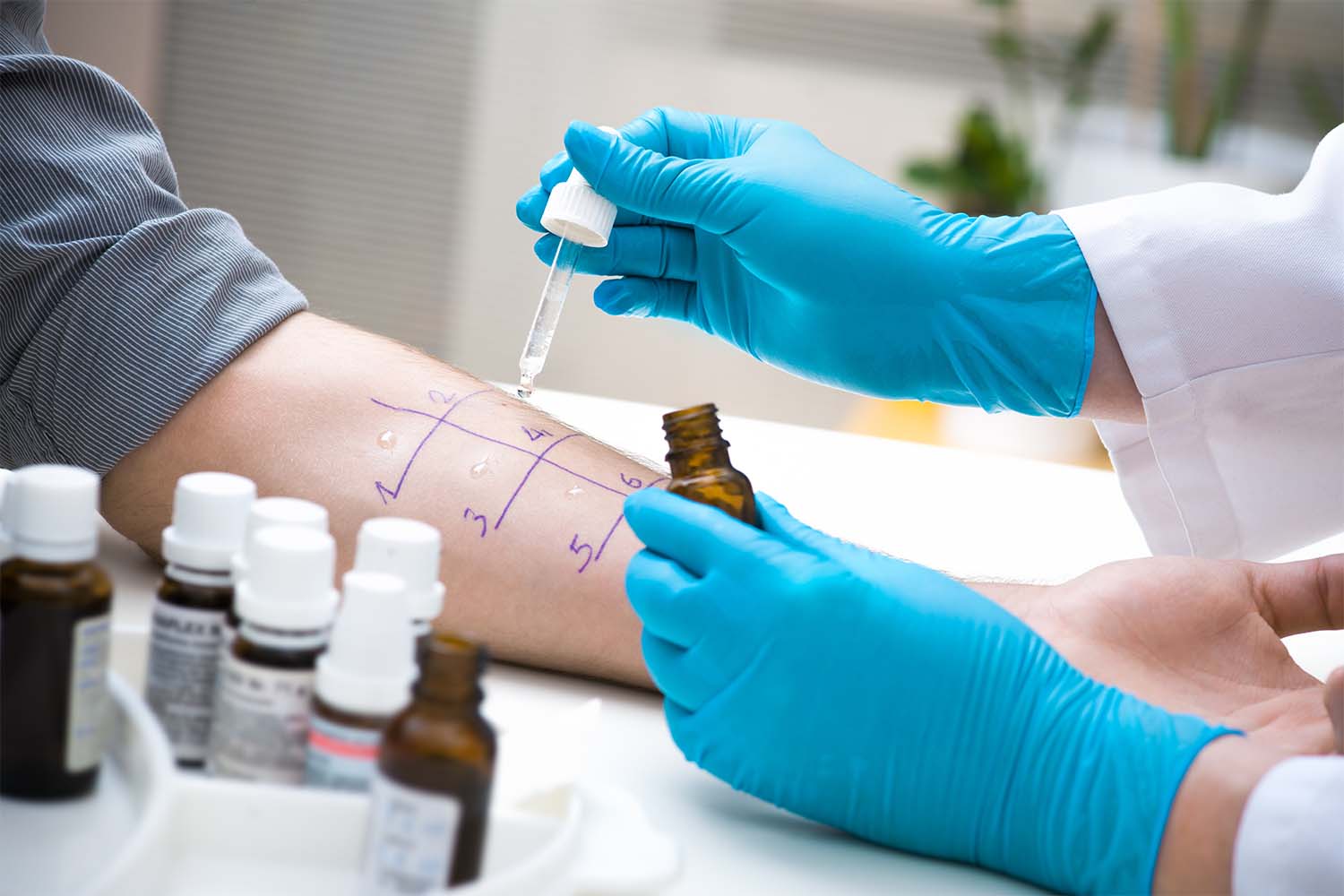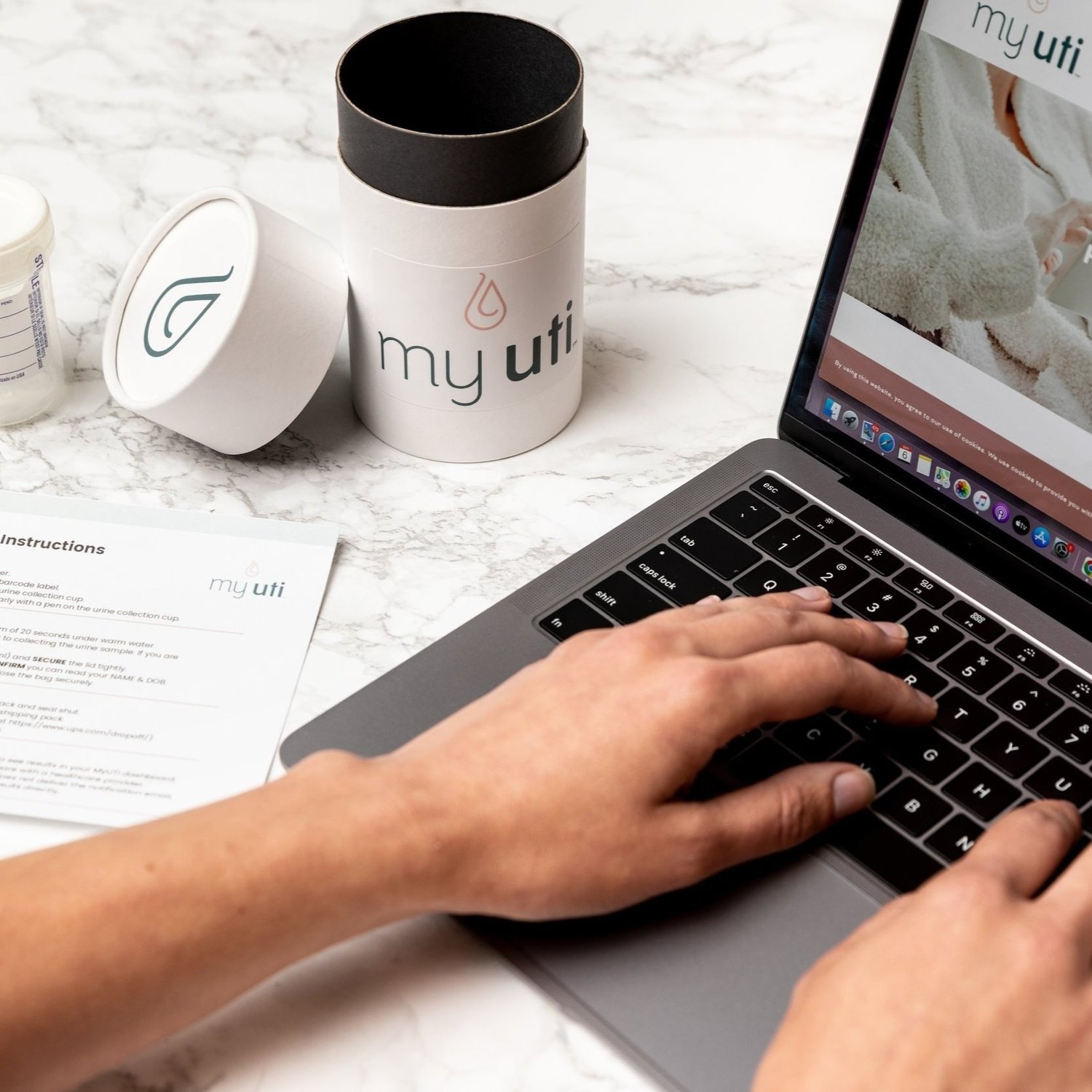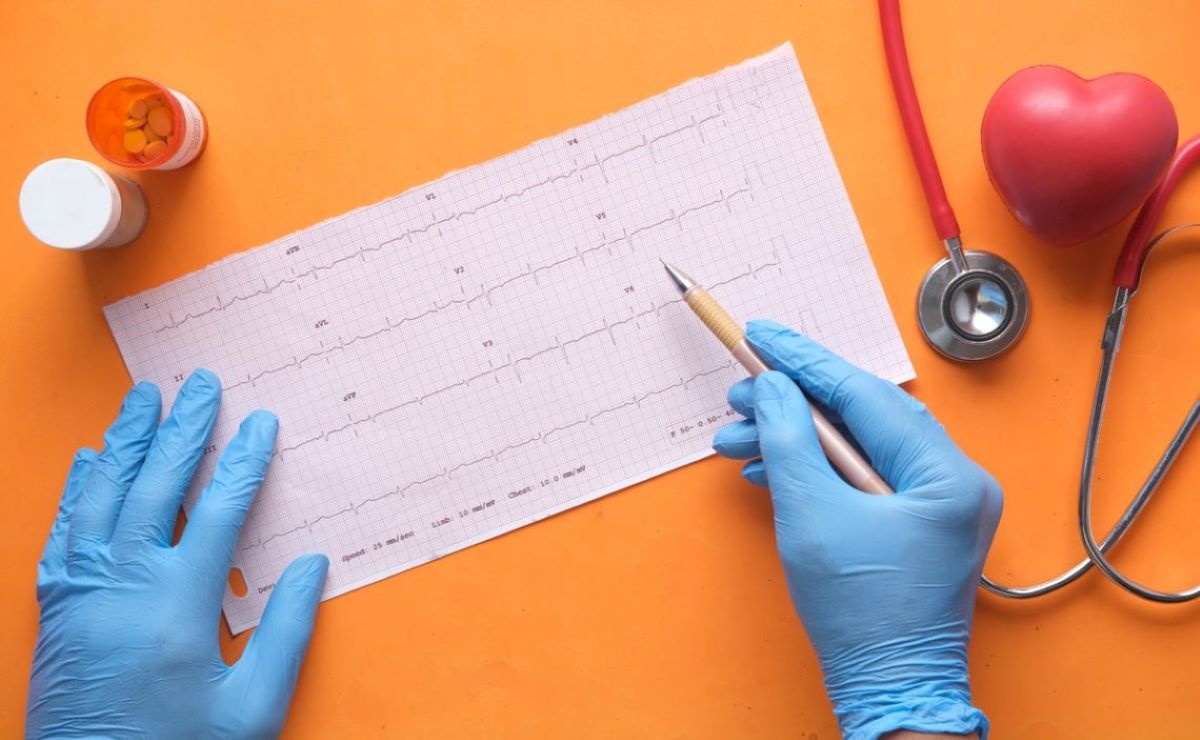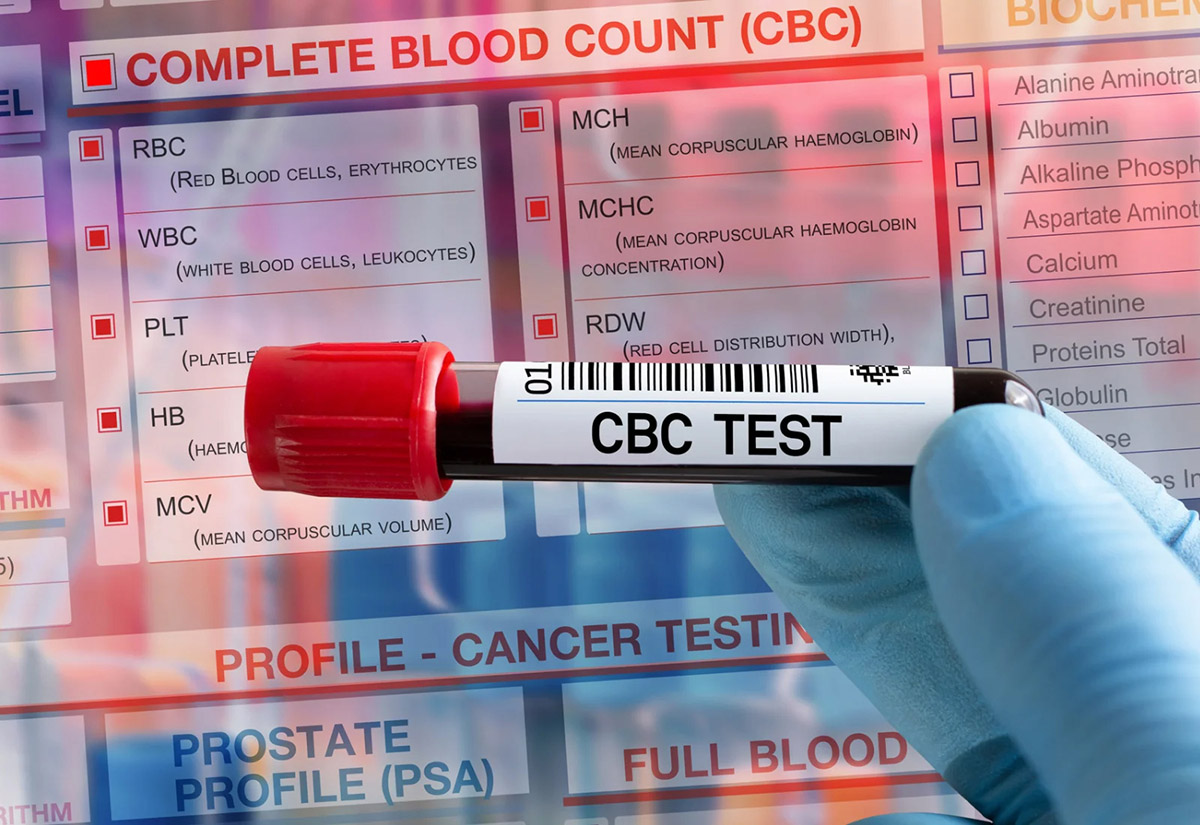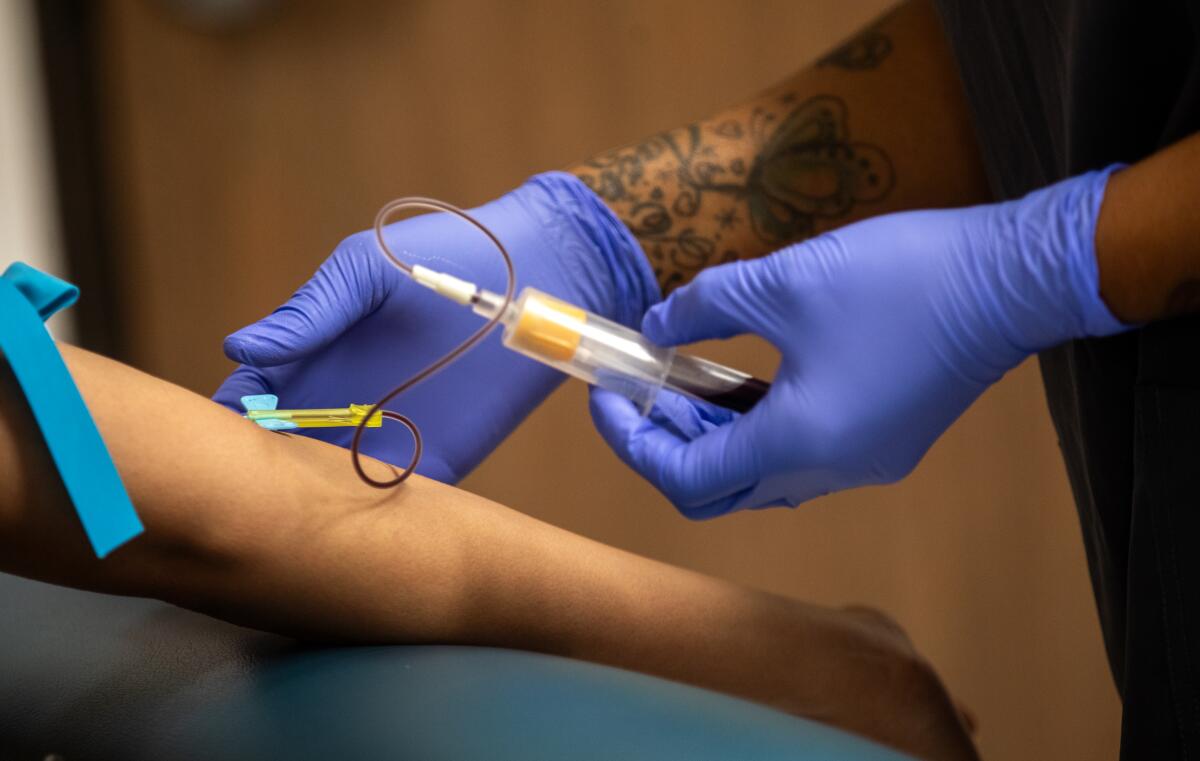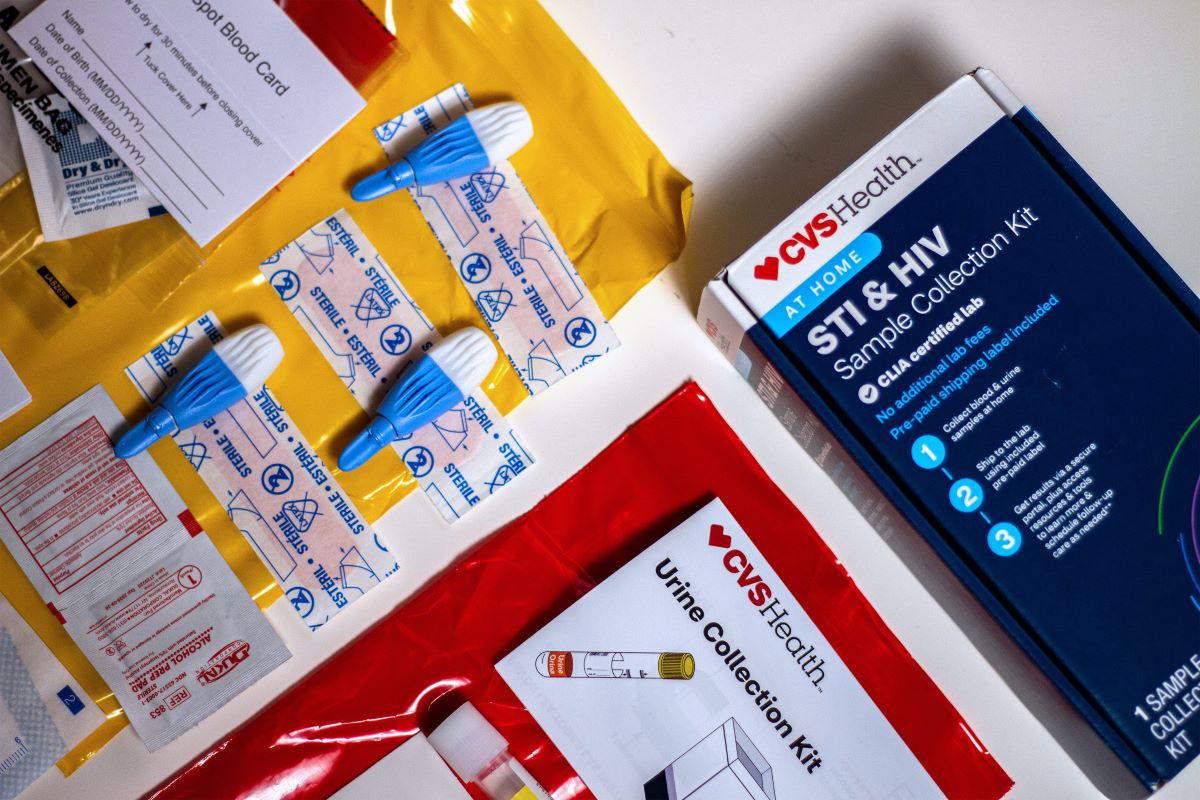

Finance
How Much Does An STD Test Cost With Insurance?
Published: November 6, 2023
Learn the cost of STD tests with insurance coverage and find out how it can impact your finances. Protect your health and wallet with the right coverage.
(Many of the links in this article redirect to a specific reviewed product. Your purchase of these products through affiliate links helps to generate commission for LiveWell, at no extra cost. Learn more)
Table of Contents
- Introduction
- Understanding the Importance of STD Testing
- How Insurance Coverage Affects STD Test Costs
- Factors Affecting STD Test Costs with Insurance
- Common STD Tests and Their Average Costs
- How to Find STD Test Providers Covered by Insurance
- Steps to Follow when Using Insurance for STD Testing
- Alternate Options for Low-Cost STD Testing without Insurance
- Conclusion
Introduction
Sexually transmitted diseases (STDs) are a common concern for many individuals. It’s important to prioritize regular STD testing to ensure early detection and timely treatment. However, one key consideration when it comes to testing is the cost.
In this article, we will explore the topic of STD testing costs when you have insurance coverage. Understanding how insurance affects the cost and what factors come into play can help you make informed decisions about your health and budget.
STD testing is crucial for maintaining your sexual health and preventing the spread of infections. Many STDs can be asymptomatic, meaning you may not experience any noticeable symptoms even if you are infected. Regular testing can provide peace of mind and help you address any potential health concerns.
Insurance coverage plays a significant role in determining how much you will pay for STD testing. If you have health insurance, it may cover some or all of the costs associated with STD testing. This can greatly reduce the financial burden and make the testing process more accessible for individuals of various socioeconomic backgrounds.
However, it’s important to note that insurance coverage can vary based on your specific plan and provider. Different insurance companies have different policies and may cover a different percentage of the total costs, leaving you responsible for the remaining balance.
Several factors can influence the overall cost of STD testing with insurance coverage. These include your insurance plan, deductible, copayment, and whether the testing is done in-network or out-of-network. It’s crucial to be aware of these factors to avoid any unexpected expenses.
In the following sections, we will delve deeper into these factors and provide a breakdown of common STD tests and their average costs. We will also discuss how to find STD test providers covered by insurance and the steps to follow when using insurance for STD testing. Additionally, we will explore alternative options for low-cost STD testing if you do not have insurance coverage.
Overall, understanding the connection between insurance coverage and STD testing costs can help you prioritize your sexual health and make informed decisions. By taking proactive steps towards regular testing, you can stay proactive about your sexual health and ensure early detection and treatment of any potential STDs.
Understanding the Importance of STD Testing
STD testing is a critical aspect of maintaining good sexual health. It involves examining bodily samples, such as blood, urine, or swabs from the genitals, to detect the presence of sexually transmitted infections. While the thought of undergoing STD testing may seem intimidating or uncomfortable to some, it plays a vital role in preventing the spread of infections and protecting both individual and public health.
Regular STD testing is important for several reasons:
- Early Detection: Many STDs can be asymptomatic, meaning you may not experience any noticeable symptoms even if you are infected. By getting tested regularly, you can catch infections early on, allowing for timely treatment and management. This helps prevent the development of complications and reduces the risk of transmitting the infection to others.
- Protect Your Health: Untreated STDs can lead to severe health consequences. For instance, if left untreated, certain STDs such as chlamydia and gonorrhea can cause pelvic inflammatory disease (PID) in women, which can lead to infertility and chronic pain. Testing allows for early diagnosis and treatment to protect your long-term health.
- Prevent Transmission: Getting tested and knowing your STD status is essential for preventing the spread of infections to sexual partners. By being aware of your infection status, you can take necessary precautions, such as practicing safe sex and notifying your partners, to prevent the transmission of STDs.
- Peace of Mind: Regular STD testing can provide peace of mind and alleviate anxiety related to potential infections. Knowing your status can help you make informed decisions about your sexual health and engage in open and honest conversations with your partners.
It’s important to note that STD testing is confidential, and healthcare providers adhere to strict privacy protocols. Your personal information is protected, and the results are only shared with you, unless you authorize the release to other healthcare providers or partners.
Remember, STD testing is not only for individuals who have symptoms or engage in high-risk sexual behavior. Many infections can be contracted through unprotected sex, even in seemingly low-risk encounters. Regular testing is a responsible and proactive approach to safeguarding your sexual health and the well-being of your partners.
Now that we understand the importance of STD testing, the next section will explore how insurance coverage can impact the cost of these tests.
How Insurance Coverage Affects STD Test Costs
When it comes to STD testing, insurance coverage can significantly affect the overall cost you will have to pay out of pocket. Insurance coverage for STD testing varies depending on your insurance plan and provider. Understanding the basics of how insurance coverage impacts STD test costs can help you make informed decisions about your healthcare and budget.
Having health insurance coverage can significantly reduce the financial burden of STD testing. In most cases, health insurance plans cover all or a portion of the cost of STD testing. However, it’s essential to review your specific insurance policy to understand the extent of coverage for STD testing services.
Here’s how insurance coverage can affect STD test costs:
- Insurance Plan Coverage: Different insurance plans provide varying levels of coverage for STD testing. Some plans may cover 100% of the cost, while others may require you to pay a certain percentage or copayment. It’s crucial to review your plan’s summary of benefits or contact your insurance provider to understand your coverage for STD testing.
- In-Network vs. Out-of-Network Providers: Insurance plans often have a network of preferred providers. Visiting an in-network provider can result in lower out-of-pocket costs because these providers have negotiated rates with the insurance company. On the other hand, going to an out-of-network provider may lead to higher costs that may not be fully covered by your insurance.
- Deductible: Your insurance plan may have a deductible, which is the amount you must pay out of pocket before your insurance coverage kicks in. If you haven’t met your deductible, you may be responsible for the full cost of STD testing. Once you meet your deductible, your insurance will cover a portion or all of the costs, depending on your plan.
- Copayment or Coinsurance: Some insurance plans require a copayment, which is a fixed amount you must pay at the time of the visit. Others may have coinsurance, which is a percentage of the total cost that you are responsible for. Copayments and coinsurance can vary depending on your plan and the specific STD test you are getting.
It’s important to keep in mind that not all STD tests may be covered by your insurance. Some insurance plans may only cover certain tests or have specific criteria for coverage. It’s recommended to check with your insurance provider or review your plan documents to understand which types of STD tests are covered.
Additionally, insurance coverage for STD testing may also vary depending on the reason for testing. For example, testing for diagnostic purposes due to symptoms may be covered differently than testing for routine screening or as part of preventive care. Understanding the specific coverage guidelines for different scenarios can help you navigate the process more effectively.
In the next section, we will explore the factors that can influence the overall cost of STD testing with insurance coverage.
Factors Affecting STD Test Costs with Insurance
Several factors can impact the overall cost of STD testing when you have insurance coverage. Understanding these factors can help you anticipate potential expenses and make informed decisions about your healthcare. Here are the key factors that can affect STD test costs with insurance:
- In-Network vs. Out-of-Network Providers: The choice of healthcare providers can have a significant impact on the cost of STD testing. In-network providers have pre-negotiated rates with the insurance company, which means that your out-of-pocket costs are often lower when you visit these providers. On the other hand, going to out-of-network providers can result in higher expenses, as the insurance company may cover a smaller percentage of the costs.
- Insurance Plan Coverage: The extent of coverage provided by your insurance plan can vary. Some plans cover 100% of the cost of STD testing, while others may require you to pay a copayment or coinsurance. It’s crucial to review your plan documents or contact your insurance provider to understand the specific coverage details for STD testing.
- Deductible: Your insurance plan may have a deductible, which is the amount you need to pay out of pocket before your insurance coverage kicks in. If you haven’t met your deductible yet, you may be responsible for the full cost of STD testing. It’s important to keep track of your deductible and factor it into your budget when undergoing testing.
- Copayment or Coinsurance: Some insurance plans require a copayment, which is a fixed amount you must pay at the time of the visit. Others may have coinsurance, which is a percentage of the total cost that you are responsible for. The specific copayment or coinsurance amount can vary depending on your plan and the type of STD test you are getting.
- Additional Services or Follow-up Tests: Depending on the test results, you may require additional services or follow-up tests. These additional tests or services may incur additional costs, which may or may not be covered by your insurance plan. It’s essential to clarify with your healthcare provider and insurance company regarding the coverage for any potential follow-up tests or services.
It’s important to review your insurance policy and understand these factors to avoid any unexpected costs. The cost of STD testing can vary significantly based on your specific insurance plan and provider choices. It’s recommended to contact your insurance company or review your plan documents to get a clear understanding of the coverage details and potential expenses associated with STD testing.
In the next section, we will discuss common STD tests and provide an overview of their average costs.
Common STD Tests and Their Average Costs
Various types of STD tests are available to screen for different sexually transmitted infections. The cost of these tests can vary based on the specific test, the laboratory conducting the test, your location, and your insurance coverage. Here are some common STD tests and their average costs:
- Chlamydia Test: This test is used to detect the presence of the Chlamydia trachomatis bacteria, which is one of the most common sexually transmitted infections. The average cost of a chlamydia test without insurance can range from $80 to $150, depending on the testing method and the healthcare provider.
- Gonorrhea Test: Gonorrhea is another common bacterial infection that can be detected through a specific test. The average cost of a gonorrhea test without insurance can range from $70 to $150. It’s important to note that many healthcare providers offer combination tests that screen for both chlamydia and gonorrhea.
- Human Immunodeficiency Virus (HIV) Test: HIV is a viral infection that can lead to AIDS if left untreated. Several types of HIV tests are available, including rapid tests and antibody tests. The average cost of an HIV test without insurance can range from $50 to $150. Many healthcare clinics and community organizations also provide free or low-cost HIV testing.
- Syphilis Test: Syphilis is a bacterial infection that can be detected through blood tests. The average cost of a syphilis test without insurance can range from $50 to $100.
- Herpes Simplex Virus (HSV) Test: HSV can be diagnosed through a blood test or a swab of the affected area during an outbreak. The average cost of an HSV test without insurance can range from $100 to $200.
- Human Papillomavirus (HPV) Test: HPV testing is commonly done as part of routine cervical cancer screening for women. The average cost of an HPV test without insurance can range from $50 to $200, depending on the specific test and laboratory used.
It’s important to note that these are average cost estimates and can vary based on different factors. Additionally, insurance coverage can significantly reduce the out-of-pocket expenses for these tests. It’s recommended to check with your insurance provider or the healthcare provider conducting the test to understand the specific costs and coverage details for the STD tests you require.
If you are concerned about the cost of STD testing or do not have insurance coverage, there are alternative options available. In the next section, we will discuss how to find STD test providers covered by insurance and the steps to follow when using insurance for STD testing.
How to Find STD Test Providers Covered by Insurance
When it comes to finding STD test providers covered by your insurance, there are a few steps you can take to ensure you have access to affordable and convenient testing options:
- Review Your Insurance Policy: Start by reviewing your insurance policy or contacting your insurance provider to understand the coverage details for STD testing. This will help you determine which providers and testing services are covered by your plan.
- Check Provider Networks: In-network providers have agreements with your insurance company to provide services at discounted rates. Check your insurance company’s website or contact their customer service to find a list of in-network STD test providers in your area. This can help you narrow down your options and save on costs.
- Consult Online Directories: Online directories can be valuable resources when searching for STD test providers covered by insurance. Websites such as your insurance company’s provider directory or third-party directories like Healthgrades or Zocdoc can provide a list of healthcare providers in your area who accept your insurance.
- Contact Healthcare Providers: Once you have identified potential providers, contact them directly to confirm that they accept your insurance and offer the specific STD tests you require. It’s always a good idea to ask about the estimated cost and any potential additional expenses that may not be covered by insurance.
- Consider Planned Parenthood or Local Health Departments: Planned Parenthood clinics and local health departments often provide STD testing at low or no cost, especially for individuals without insurance. They may also accept insurance for those who have coverage.
- Utilize Telemedicine Services: Telemedicine services offer a convenient and accessible way to access STD testing. Many telemedicine platforms have partnerships with laboratories that accept insurance. Consult with a healthcare provider through telemedicine to discuss your testing options.
It’s important to note that even if a provider is in-network, it’s advisable to confirm coverage and costs with your insurance company directly. This will help you avoid any surprise bills or unexpected expenses.
By following these steps and conducting thorough research, you can find STD test providers covered by your insurance. This ensures that you have access to affordable and high-quality testing services, allowing you to prioritize your sexual health without breaking the bank.
Next, let’s discuss the steps to follow when using insurance for STD testing to ensure a smooth and hassle-free experience.
Steps to Follow when Using Insurance for STD Testing
When using insurance for STD testing, it’s essential to follow certain steps to ensure a seamless and stress-free experience. By following these guidelines, you can navigate the process smoothly and maximize the benefits provided by your insurance coverage. Here are the steps to follow when using insurance for STD testing:
- Review Your Insurance Policy: Start by reviewing your insurance policy to understand the coverage details for STD testing. Familiarize yourself with the terms, limitations, copayments, and deductibles associated with your insurance plan.
- Choose In-Network Providers: Opt for in-network providers whenever possible. These providers have contracted rates with your insurance company, resulting in lower out-of-pocket costs for you. Check your insurance company’s online directory or contact their customer service to find in-network STD test providers in your area.
- Make an Appointment: Call the chosen healthcare provider and schedule an appointment for the STD testing. Inform them that you will be using insurance for the testing so that they can verify your coverage and prepare the necessary paperwork.
- Provide Insurance Information: At your appointment, be prepared to provide your insurance information to the healthcare provider. This typically includes your insurance card, policy number, and any necessary authorization or referral forms.
- Confirm Coverage: Before proceeding with the testing, confirm with the healthcare provider that the specific tests you need are covered by your insurance plan. Some tests may require prior authorization, so it’s crucial to address any coverage concerns beforehand.
- Pay Copayment or Coinsurance: Depending on your insurance plan, you may be required to pay a copayment or coinsurance at the time of your visit. Be prepared to make the necessary payment, as outlined by your insurance policy.
- Follow Up on Billing: After the testing is complete, you may receive an Explanation of Benefits (EOB) from your insurance company detailing the coverage and any remaining balance. Review the EOB carefully and contact your insurance company or the healthcare provider’s billing office if you have any questions or concerns.
- Understand Your Rights: Familiarize yourself with your rights as an insurance policyholder. You have the right to appeal any denied claims or discrepancies in coverage. If you believe a claim has been unfairly denied, contact your insurance company and provide any necessary documentation to support your case.
By following these steps, you can ensure a smooth experience when using your insurance for STD testing. Remember to communicate openly with your healthcare provider and insurance company to clarify any concerns or doubts regarding coverage and costs.
In situations where you do not have insurance coverage or face financial constraints, there are alternative options available for low-cost STD testing, as discussed in the next section.
Alternate Options for Low-Cost STD Testing without Insurance
If you don’t have insurance coverage or find that the cost of STD testing with insurance is still unaffordable, there are alternative options available for low-cost or even free STD testing. These options ensure that individuals without insurance can still prioritize their sexual health. Here are some alternate options for low-cost STD testing:
- Planned Parenthood: Planned Parenthood clinics offer low-cost or sliding-scale fees for STD testing and other reproductive healthcare services. They have a wide network of clinics across the United States, making them accessible to many individuals, regardless of insurance status.
- Local Health Departments: Many local health departments provide free or low-cost STD testing services as part of their public health initiatives. Health departments often have clinics or programs specifically dedicated to sexual health, where individuals can get tested confidentially.
- Community Health Clinics: Community health clinics, such as federally qualified health centers, often offer low-cost or discounted services, including STD testing. These clinics serve uninsured individuals and those with low income, ensuring that cost doesn’t become a barrier to essential healthcare.
- Non-Profit Organizations: Non-profit organizations, such as community-based organizations and LGBTQ+ centers, may provide free or low-cost STD testing. These organizations often prioritize serving underserved populations and may have partnerships with healthcare providers to offer affordable testing.
- Home Testing Kits: Home testing kits for certain STDs have become increasingly popular and offer convenience and privacy. These kits can be purchased online or at pharmacies and usually involve self-collection of samples, which are then sent to a laboratory for testing. Home testing kits vary in cost, but they can be a more affordable option compared to in-person clinic visits.
- Clinical Trials: Some research institutions or medical centers conduct clinical trials for STD testing. Participation in these trials may grant access to free testing, particularly for innovative diagnostic methods. Explore local clinical trial listings or reach out to research institutions to see if any opportunities align with your needs.
It’s crucial to research and inquire about the specific resources available in your area, as availability and costs may vary. Some options may also require proof of income or have specific eligibility criteria. Additionally, it’s important to remember that while low-cost or free options are available, it’s essential to prioritize the quality and accuracy of the testing services.
Regular STD testing is vital for maintaining optimal sexual health, regardless of insurance status. By exploring these alternative options, you can access affordable testing and ensure early detection and treatment of any potential infections.
Finally, let’s conclude the article by summarizing the key points discussed.
Conclusion
STD testing is a crucial aspect of maintaining good sexual health and preventing the spread of infections. When it comes to the cost of STD testing, insurance coverage plays a significant role. Understanding how insurance affects the cost can help you navigate the testing process and prioritize your health within your budget.
Insurance coverage for STD testing varies depending on your specific plan and provider. Factors such as in-network vs. out-of-network providers, deductible, copayment, and the specific tests covered by your plan can all impact the overall cost of STD testing.
It’s important to review your insurance policy, understand your coverage details, and choose in-network providers whenever possible. Utilizing online directories, contacting healthcare providers, and considering alternative options like Planned Parenthood or local health departments can help you find STD test providers covered by your insurance.
If you don’t have insurance coverage or face financial constraints, there are still options available for low-cost or free STD testing. Planned Parenthood clinics, local health departments, community health clinics, non-profit organizations, home testing kits, and participating in clinical trials are alternative routes to consider.
Regular STD testing is essential for early detection, timely treatment, and managing your sexual health. By understanding your insurance coverage, exploring affordable options, and taking proactive steps towards testing, you can prioritize your health without breaking the bank.
Remember, STD testing is confidential, and healthcare providers adhere to strict privacy protocols. Your sexual health is a priority, and by being proactive about testing, you can take control of your well-being and promote a healthier future.
So, don’t let cost be a deterrent to getting tested. Take the necessary steps to ensure that you are taking care of your sexual health, whether through insurance coverage, low-cost options, or utilizing resources offered by non-profit organizations. Your health is worth it, and by prioritizing regular STD testing, you are investing in your overall well-being.
